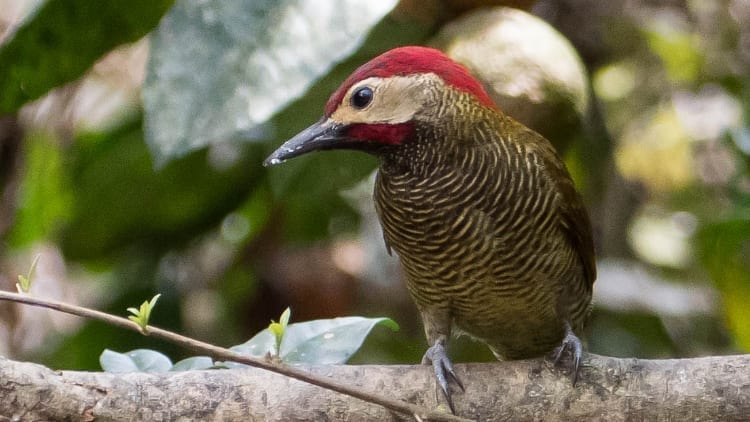Galápagos – choice anxiety?
Island hopping or cruise expedition? Are this ship and this route actually the best choice? This article tells you what to look for when choosing the right trip ...

We are experiencing literal silence during this unique moment in time, less traffic and opportunities to go on a relaxed stroll or take a rest on your balcony or in the garden. It has sharpened our senses for new stimuli. More than ever, the cheerful sound of birds attracts our attention. The Dutch Society for the Protection of Birds has received a significant increase in phone calls from people who have questions about the birds they see, the number of online viewings of their nature webcams has risen to historical high levels and they have decided to put a nice free educational course online to learn everything about the Dutch garden birds. Subscribe here (available only in Dutch)
This summer we will travel close to home and have the chance to experience our local wonders of nature. And for the future? After listening to the melancholic song of the blackbird and hearing the hammering sound of the woodpecker, it is fun to broaden your horizon. Ecuador is the top destination for bird watchers. With more than 1600 bird species spread across the Amazon, Andes Mountains, Cloud Forest, tropical coast and the Galápagos, the country is a true paradise. In addition, Ecuador has no mass tourism; in 2018, only 2.4 million travelers visited this country that is half the size of France (by comparison, the same year the Netherlands received approximately 19 million tourists). Away from the human bustle, wandering by yourself through the vast National Parks, you will have true peace and space to immerse yourself in the beauty of nature. But where to go to have the best experience?
Are you new to the world of our winged friends? Then take a 3-week trip to the Andes Mountains, the Amazon and the Galápagos. In addition to discovering many bird species, you will also enjoy an unprecedented variety of ecosystems, landscapes and the local culture.
For a first acquaintance with the birds of Ecuador, it is a good idea to start near Quito, in the Chocó region. A week along the western slope of the Andes with a visit to sites such as Yanacocha, Tandayapa, Refugio Paz de las Aves, Mindo and Milpe will introduce you to countless hummingbirds and exotic specimens such as the cock of the rock and the brightly colored chestnut-mandibled toucan. With a day trip from Quito to Antisana National Park, you have a great chance to add the Andean condor to your list; the true king of the Andes mountains and the largest flying bird in the world by combined measurement of weight and wingspan of up to 3.2 meters.
Continue your holiday from Quito to the Amazon for a 4- or 5-days adventure. For example you could chose the Yasuní National Park where the pre-historic Hoatzin awaits you sitting along the waterfront. When visiting a clay lick, enjoy a spectacular show of sound and color as hundreds of parrots descend on the wall to lick minerals off the rocks.
You can conclude a 3-week trip with no less than 8 days on the Galápagos Islands. Which are the bird islands par excellence? Genovesa (largest breeding colony of red footed and nazca boobies), Seymour Norte (the maternity ward of the blue-footed boobie) and Española (admire the large waived albatross and marvel at the red-billed tropicbird with its graceful tail).
Are you already familiar with the tropical bird species or have you been on a birding trip to Ecuador before? Then a tour through the south of Ecuador is a real “must-do”. Virtually no tourists, an abundance of protected natural areas and reserves, cozy lodges and very knowledgeable guides. Here you will go completely off the beaten track and you will truly be at one with nature.
Start your journey in Guayaquil and head south towards the charming town of Loja. In the reserves of Yunguilla, Tapichalaca, Utuana, Jorupe, Copalinga and Buenaventura you will find an extremely warm welcome in hospitable lodges where countless birds and hummingbirds will fly back and forth right to your front door. You don’t even have to go out to see the most beautiful species. The very rare and endemic Jocotoco antipitta and pale-headed brush-finch find their homes in these reserves, protected against extinction thanks to conservation work. By staying here, you support these valuable initiatives.
Registered bird species in Ecuador: link
The most extensive online bird guide: Birds of Ecuador – Field Guide
App Store
Google Play
Would you like to know more about birding trips to Ecuador? Do not hesitate to contact us. We are happy to put together your holiday according to your wishes, we offer comfortable lodges and knowledgeable guides so that you will want for nothing.